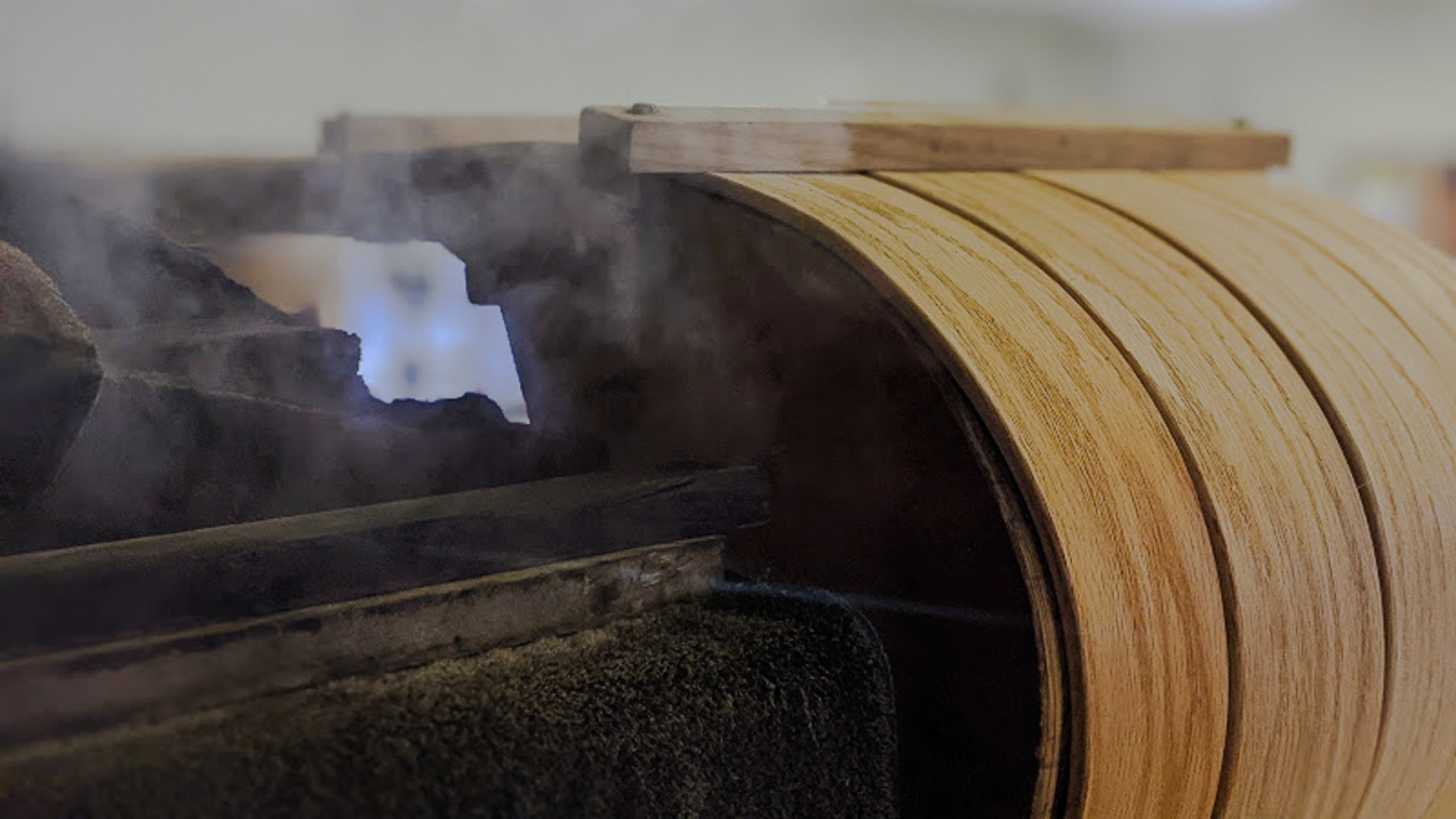Steam Bending Toboggans and Snowshoes
Over years of assisting my father in ripping, cutting, planing, tapering, and finally…bending hardwood, it's safe to say that I've picked up a few things about the craft. However, as a science and math guy, my employees and I have recently applied a little more data collection and observation analysis to the process in an attempt to gain a better understanding of achieving success in yield, and to perhaps push the limits a bit. There are days when a piece of oak or ash just doesn't want to cooperate, but more often than not, we can make wood turn and twist and bend into shapes that make the 6th-grade class oooh and aaah during their field trip visit to our toboggan shop.
Just as I'm learning from my mentor, he learned from his, and so on up the chain. In fact, my research credits a German cabinet maker, Michael Thonet, as the inventor of the steam bending process during the 19th century. His patented steam bending process was used to make wooden chairs with curved backs and legs, an important innovation that is on a long list of significant advancements in materials technology occurring during that time period in human history (see Thonet's Biography). Steam bending became popular in the US in the late 1890s, driven by the expansion of automobile carriages made from the prolific lumber in the midwestern US.
Although the employees here at NTCo wear shoes (unlike the low-wage workers in Figure 2), the process hasn't evolved much more than Thone's practices. Factors that impact steam bending success are many, but here are a few that I know are important: The species, grain of the cut, the thickness of the board, the drying process of the wood prior to steam bending, the intensity of the steam, the length of time in the steamer, the “feel” of the wood bending while pressure is applied, ambient conditions such as pressure and humidity…and others I may not even be aware of. Watching toboggan boards and snowshoe frames bend before my eyes are still fascinating to this day. The anticipation of the bend, the hopefulness of not hearing a cracking sound, and the carrying on of a traditional yet important craft.


